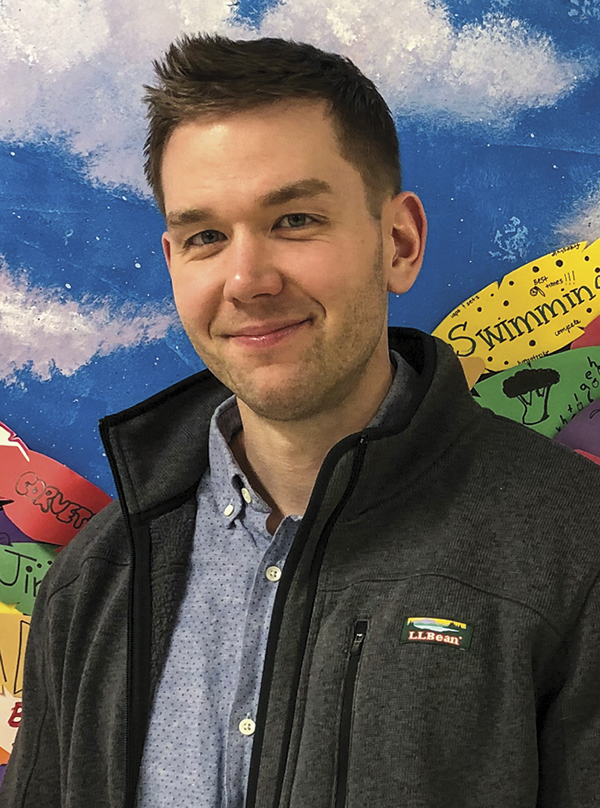Outside Experts Inside Classrooms
June 01, 2023
A distinctive approach to collaboration between a remote school district and a university professor delivering expert feedback on performance
Matthew Shimkus is an experienced special education and math teacher with seven years in the classroom. He and his also-experienced co-teacher, Carley Raynor, were among several teaching pairs in the East Hampton School District in Long Island, N.Y., where special education teachers and English as a new language teachers often are teamed with content teachers at the secondary level to better meet the needs of their diverse student population.
In early 2021, I observed Shimkus and Raynor team-teach a remote algebra lesson for a class of 22 high school students who attended via Google Meet. After the observation, the teachers and I agreed that student participation was lacking. We brainstormed some ways that points for class participation might be added given the district administration’s guidance about camera use (not required of students), homework assignments (prohibited over weekends and on holidays) and classroom participation (excluded from course grades).
Two strategies that held promise were including student-developed math problems on a future test or quiz and using breakout rooms so students who may be reticent to participate in whole-class discussions might be more willing to share in small groups carefully designed by the teachers.
This Content is Exclusive to Members
AASA Member? Login to Access the Full Resource
Not a Member? Join Now | Learn More About Membership
No Longer So Isolated: A New Way of Being Observed
BY MICHAEL V. BUQUICCHIO

As the only AP Research teacher in my school district (and the surrounding districts), for years I had to rely on internet forums to explore and share instructional strategies with other teachers in my content area. However, my participation in a video conferencing initiative run by Jacqueline Darvin, a Queens College professor, provided targeted, actionable feedback for my classroom teaching.
Darvin’s expertise in research and her knowledge of the College Board AP Research rubric, along with her perspective after observing me instruct students on providing feedback on each other’s AP Research paper drafts using an annotated rubric, have proven invaluable.
When we reflected on the observation, Darvin and I noted that while some students easily provided effective feedback to their peers, others had difficulty commenting on the parts of the AP Research rubric that deal specifically with communication of the student’s ideas through organization, design elements, grammar, style, word choice and the proper citing and attributing of sources. Darvin suggested I encourage students to focus on only one rubric component at a time. Starting small, with a primary focus, she advised, is less daunting to students and yields better peer feedback.
After applying the strategy, I observed what had once been an intimidating task for many students now became manageable. By breaking down the assignment into digestible pieces, my students now provide constructive criticism to their peers and no longer succumb to rubric fatigue.
Accessible Guidance
During my nine years of teaching, professional development opportunities typically have been sprinkled throughout the school year, often covering topics disconnected from practical classroom application. When the workshops ended and I attempted a new strategy, the training instructors rarely were in the classroom for support. In contrast, the accessibility of video conferencing allowed me to quickly follow up with Darvin to report and reflect on the use of her suggestions.
My ongoing virtual communication with Darvin has resulted in an incredible academic partnership. She has mentored me through specific instructional choices, guided me in the process of becoming an AP reader for the College Board and helped me navigate the scholarly publication process.
We continue to collaborate in AP Research, including the twice-yearly research symposia where my AP Research students in East Hampton, N.Y., and Darvin’s graduate students work together via Zoom to refine the high school students’ research projects and their AP Research oral defenses. Darvin’s students provide informal but actionable feedback.
Supervisors and building administrators often are too busy and their days too unpredictable to establish similarly rich relationships with staff, no matter how carefully planned. Video conferencing technology allows school districts to match outside experts with teachers yearning for professional growth, new ideas and fresh perspectives.
Michael Buquicchio is a media specialist and teacher at East Hampton High School in East Hampton, N.Y.
Advertisement
Advertisement
Advertisement
Advertisement



